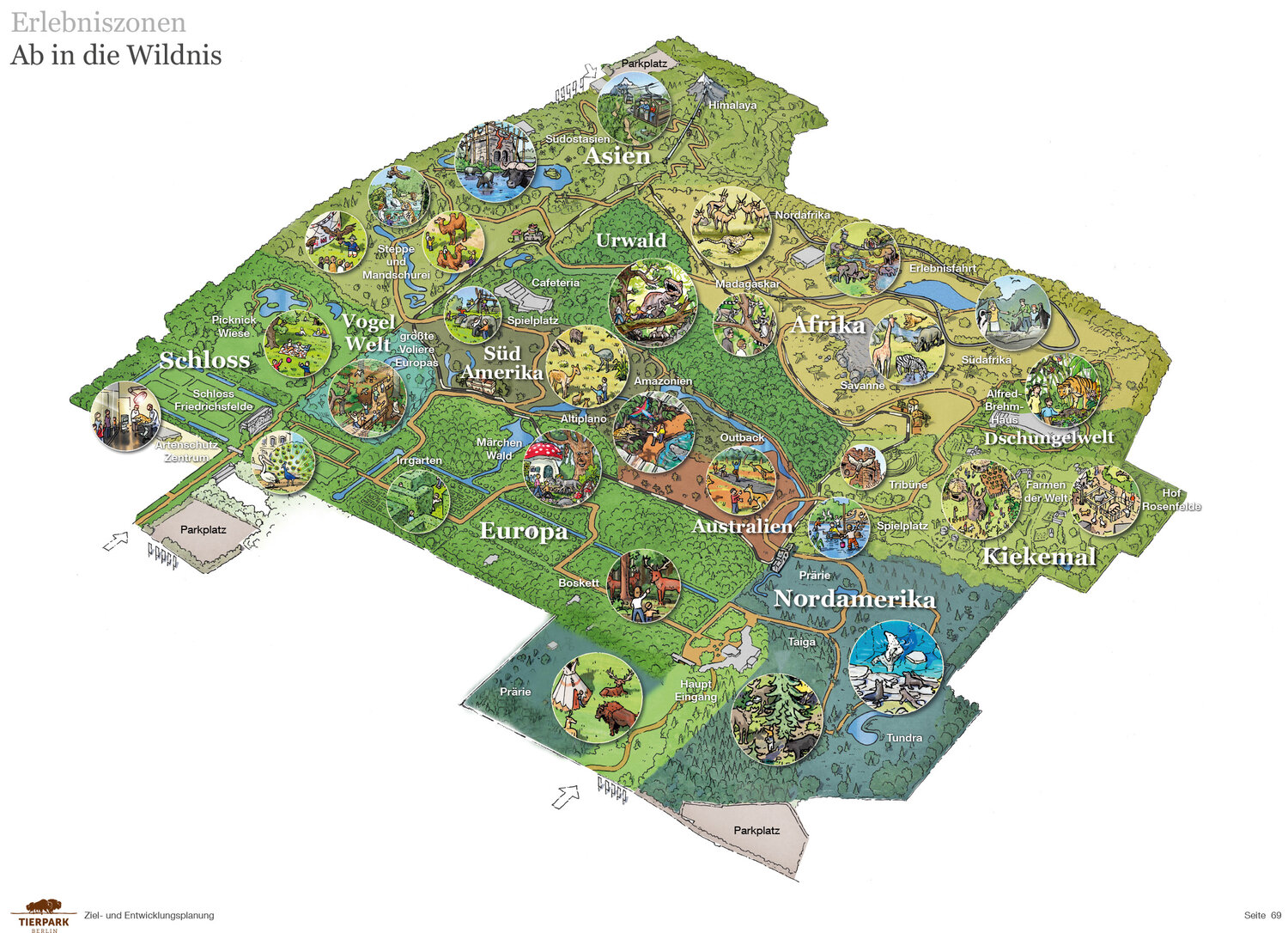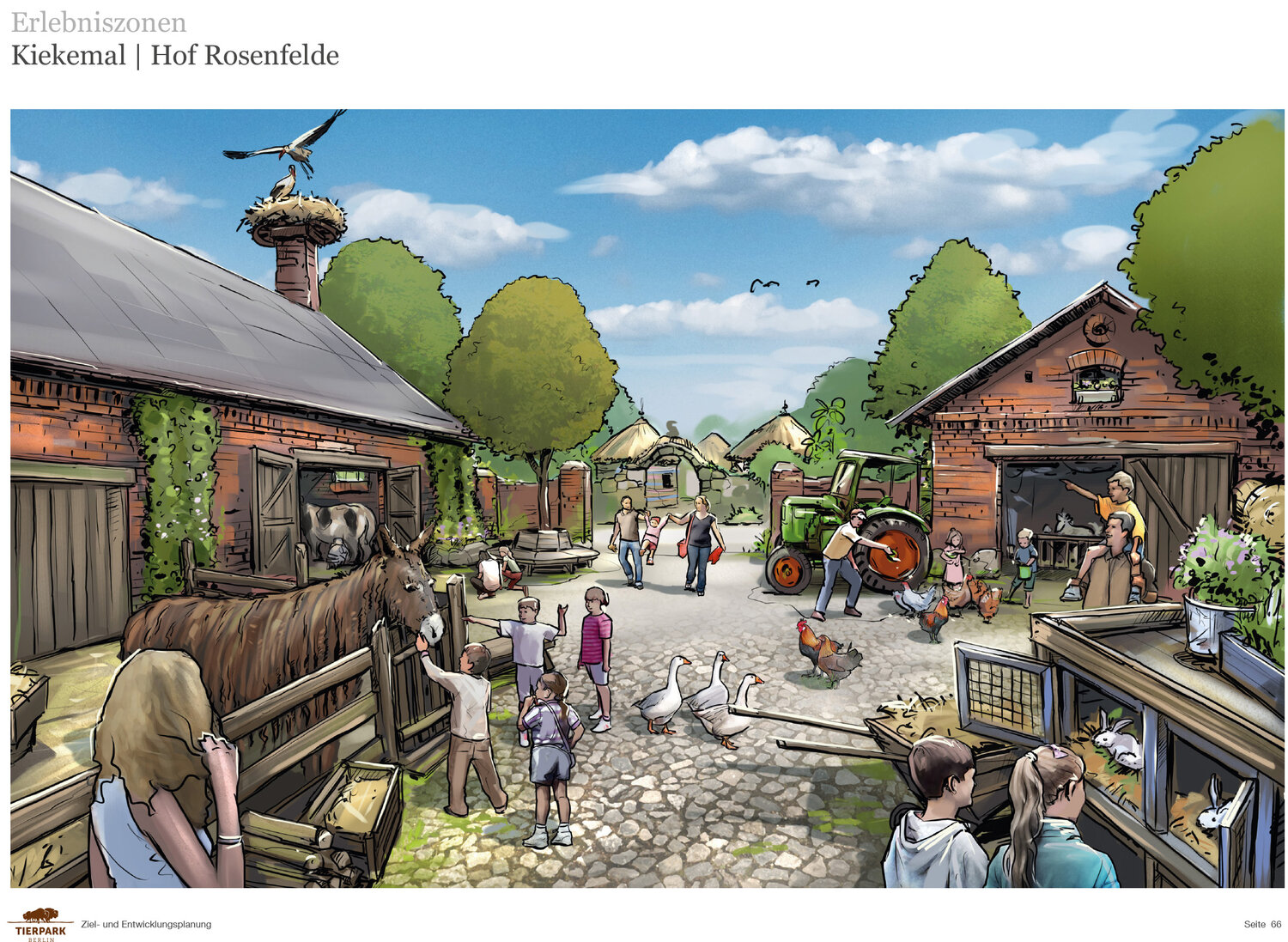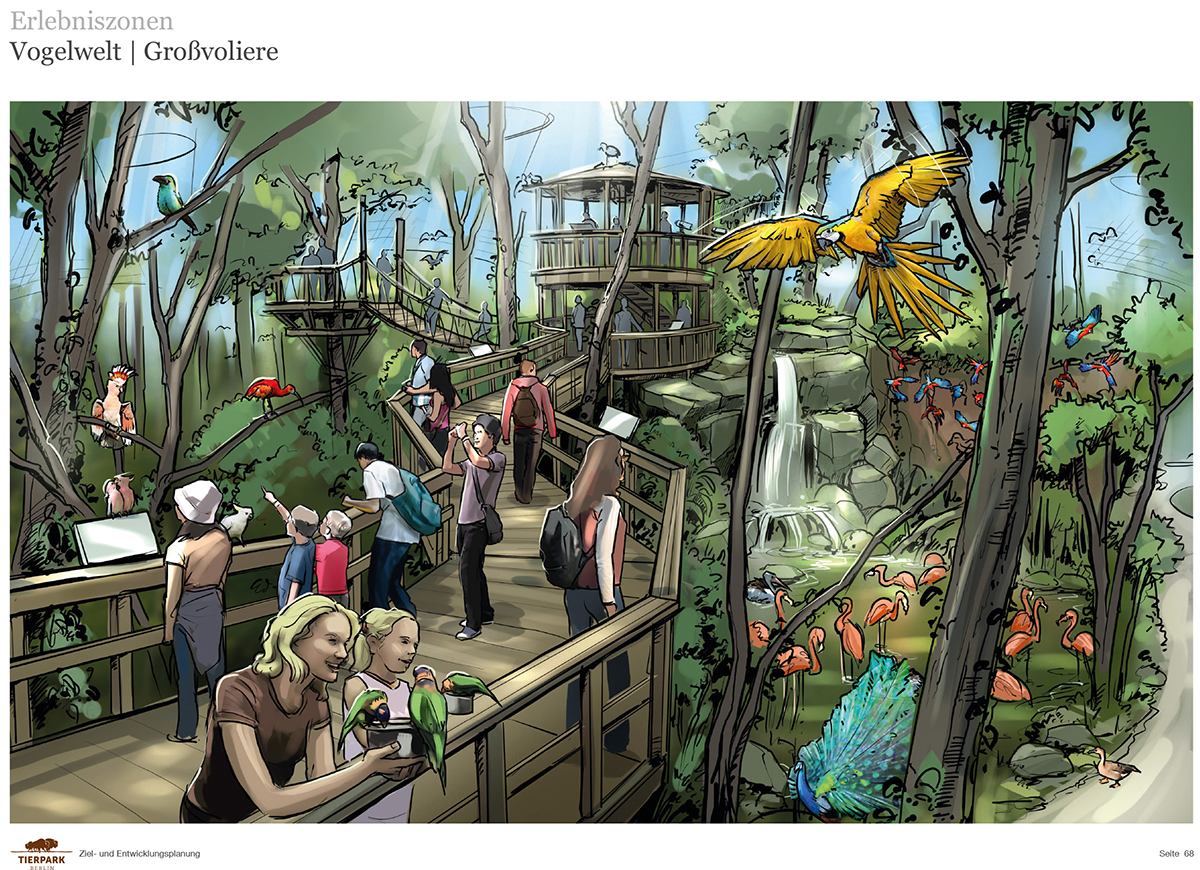Visitors to Zoo Berlin can embark on a true journey around the world in 2030 and be enchanted by the jaguars, sloths and manatees in the Amazon House. Tierpark guests can jump on the experience-train and travel through Africa while being astounded by elephants, giraffes and lions. Snow leopards, red pandas and takins can be admired while taking a Himalayan ride on a gondola. Visitors to the Tierpark will now be able to see the largest aviary in Europe near the palace entrance. Pelicans, flamingos and cockatoos will find their home here. What do farms in Asia or Africa look like? "Farms of the world" will give visitors an insight: There will of course also be a "Hof Rosenfelde" German farm there. Native animal species are on show in the enchanting European forest. The Jungle World with tigers and leopards will remain in the Alfred-Brehm House, but there will be new lodgers in the form of the Komodo dragon, sun bear and crocodile. North America will retain its customary place. Seals and southern fur seals complement the existing bear landscape with the polar bear and gang close to the Bärenschaufenster entrance.
We even have a potential multi-storey car park by the Bärenschaufenster as well as an additional side entrance with 650 car parking places on Gensinger Straße planned. A daycare facility for children is planned in the former Director's House (Dathehaus). The Tierpark School will be housed in the Brandenburg Farm building. Together with the Leibniz Institute for Zoo and Wildlife Research, we plan to build a species conservation center with science center and glass animal clinic by the palace entrance.
From April to December 2014, the Tierpark team, led by director Dr. Andreas Knieriem, developed an objectives and development plan with the assistance of external specialist planners. The complete plan contained 180 pages. This was presented to the Supervisory Board of the Tierpark and all associated employees in January 2015. The Supervisory Board approved the plan on 16 April 2015. The application was registered with the State Ministry of Finance at the same time. An extract (79 pages in volume) will be discussed in the upcoming meeting of the Central Committee of the Chamber of Deputies on 10 June 2015, at best, with a positive recommendation to provide financial resources in the state budget for the coming year.
The implementation shall have three independent phases. They are coordinated with each other and can be implemented successively and with larger chronological intervals, so that operating phases can also follow development phases. The first phase should be implemented between 2016 and 2022. It has an investment volume of 49 million euros and includes the projects with the most need for action from a zoological and constructional point of view, especially with respect to the specialist assessment requirements of the mammals. In addition, the projects included here have the highest scope to draw in visitors and thus the greatest economic potential. In the period to 2030, there will be funding requirements in the amount of approx. 92.36 million euros in total for the implementation of all core projects, which upgrade the zoological facilities and building stock while increasing the visitor experience.
Based on portfolio and market analyzes, in which the energy demand was also analyzed alongside visitor surveys, building and green space structure requirements, the Tierpark was subjected to a direct comparison with other zoological gardens. A strategy was derived and a concept developed out of this, which foresees the long-term modernization and timely transformation of the Tierpark in Berlin-Friedrichsfelde.
"I am delighted to finally share the months of planning with the public and politicians and hope that our ideas will inspire the establishment of the Tierpark as a day-long recreational destination for all Berliners. We have the capability of presenting large herds of animals in spacious landscapes at Tierpark Berlin, something that no other zoo in Europe can match. We will be able to carry out the needs analysis and preliminary planning as soon as the financing of the objectives and development plan has been clarified. We would now like to draw attention to the fact that in 15 years, a cable car to the Himalayas will run in the middle of Berlin and a Komodo dragon will greet our guests in the Alfred-Brehm House. There is only initially a rough version of the objectives and development plan. Detailed designs for the new facilities will only be drawn up within the individual project sections", explained Dr. Andreas Knieriem.



